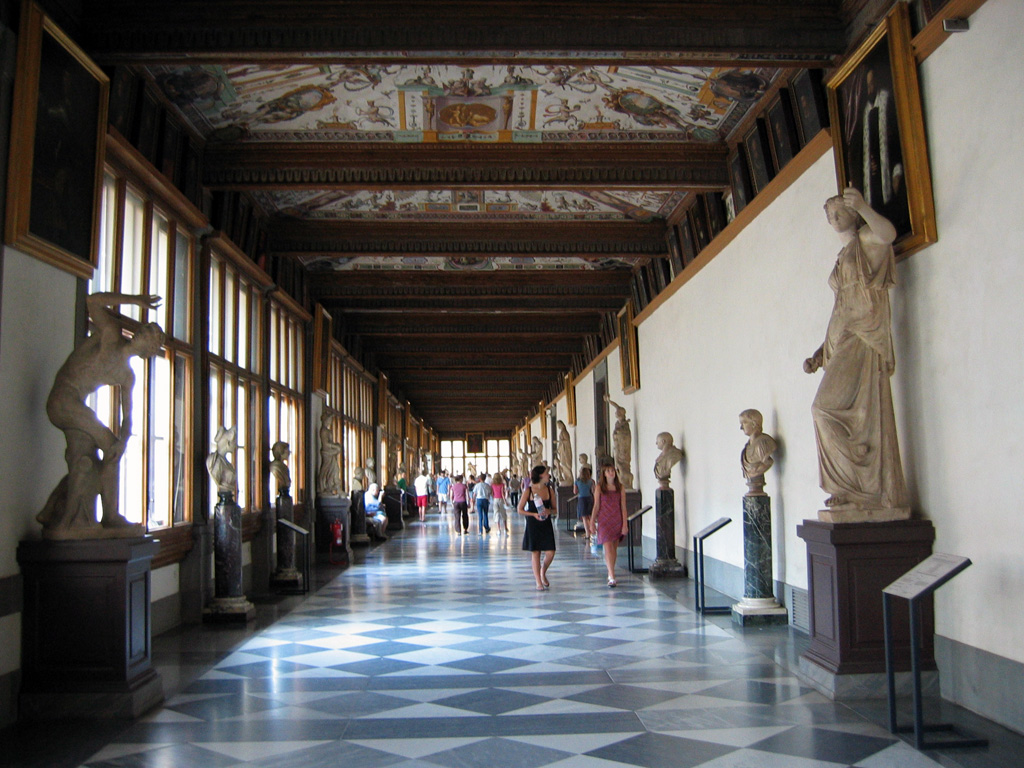Notes from our recent Italy trip.
This frieze was on the side of our little B&B,
Bed and Breakfast San Francesco in
Siena, Italy. I liked it very much. It was startling at first. You have to understand that this was on a busy, but not fashionable street a bit out of the center of town. (I have a guess as to the reason for this particular location, but that is speculation for another post.) It is not a place one would look for public art. The curtains are real, but the figure is of stone.
If this were in America, of course, it would cause a scandal. The morality police would be in uproar. "This is a neighborhood! Think of the children!" We encountered a good deal of public art in Italy, and much of it in neighborhoods. We found it in big cities, towns, and little villages, in ecclesiastical settings and secular settings. Some of it would have been regarded as considerably more salacious by certain members of American society than this example. Most of it was a good deal older.

The other remarkable thing about the public art is that it was unmolested, even in forgotten or neglected areas. Its not that Italy was free of vandalism. We saw plenty of tagging and other forms of graffiti. We did not see graffiti on art. We did not see art that was obviously by vandalism. I don't know whether it is through forbearance of vandals or a quicker civic response to vandalism, but I suspect the former.
I don't think that public depiction of the body is necessarily more acceptable in Italy (although it may be, I don't know). I think depiction of anything in the context of art has a different meaning in Italy than in the US. Art in Italy, and in Europe, in general is deeply embedded in many aspects of culture; in religion, in civic life, in history and national mythology. I think subjects that would otherwise be controversial, even in Europe, get a pass when it is in the context of Art. In America we are surrounded by creative visual images, mostly "commercial art". Arguably the average American sees more of it in a day than the average European. The American street or public place is a jumble of colorful images and graphic design. But it is ephemera. It is not considered capital A Art.
In America, capital A Art is now treated with suspicion. This started in the eighties, when the conservative movement found it convenient to demonize art as a part of "liberal elitism". In the eighties art and music programs disappeared from public schools. But, even before this, public art was mainly "good for you". It separated a middle class person from a working class person. In America, sports teams are for binding a community together.
- J
 Amendla! A Revolution in Four Part Harmony is a documentary about the role of music in the struggle against apartheid in South Africa. I have heard Vukani Muwethu sing many of the important songs of this period. They are powerful. They are inspiring. They are truly revolutionary. The movie is a bit muddy. It is very sincere, but it should have been cut more crisply. There are some wonderful images. Nelson Mandela dancing will make you believe. The power of the music rarely came across, though.
Amendla! A Revolution in Four Part Harmony is a documentary about the role of music in the struggle against apartheid in South Africa. I have heard Vukani Muwethu sing many of the important songs of this period. They are powerful. They are inspiring. They are truly revolutionary. The movie is a bit muddy. It is very sincere, but it should have been cut more crisply. There are some wonderful images. Nelson Mandela dancing will make you believe. The power of the music rarely came across, though.







